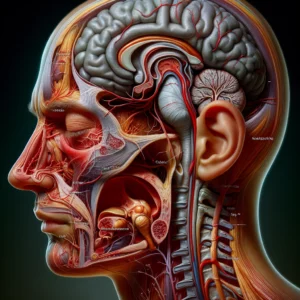Comprehensive Insights into Headache Causes and Effective Management Strategies
Headaches are a prevalent health issue that can drastically interfere with your everyday activities, diminishing your ability to concentrate, be productive, and enjoy your leisure time. These painful episodes manifest in various forms, each characterized by distinct triggers and symptoms. It is essential to develop a thorough understanding of the different types of headaches to facilitate effective treatment and management. This knowledge empowers individuals to personalize their strategies based on their unique experiences and needs, enabling a more tailored approach to tackling this common health concern, ultimately leading to improved well-being and quality of life.
Whether you deal with sporadic headaches or suffer from chronic pain, identifying the root causes is vital for pursuing appropriate treatments and adopting beneficial lifestyle modifications. As you explore the complexities of headache management, consider examining a variety of treatment options that encompass both traditional and alternative remedies. Techniques such as balanced acupuncture, neurological acupuncture, and manual therapy can alleviate discomfort by addressing the underlying causes, giving you the tools to take charge of your health and improve your overall quality of life.
Exploring these diverse treatment pathways allows you to embark on a holistic journey toward headache relief while simultaneously enhancing your overall health and wellness.
Key Strategies for Effective Headache Management
- Tension headaches are the most commonly reported type, often described as a persistent, band-like pressure around the head, which tends to worsen during stressful periods.
- Migraine headaches are characterized by severe, pulsating pain, commonly associated with nausea, vomiting, and heightened sensitivity to light and sound, which can significantly disrupt daily life.
- Cluster headaches are infamous for their intense pain, occurring in cyclical patterns and typically centered around one eye, making them among the most painful types of headaches.
- Sinus headaches are triggered by sinusitis, resulting in discomfort and pain in the forehead, cheeks, and nasal areas, often exacerbated by allergies or infections.
- Hormonal headaches, often impacting women, are linked to hormonal fluctuations and commonly occur during menstruation, pregnancy, or menopause, requiring specialized management techniques.
 In-Depth Analysis of Tension Headaches and Their Specific Triggers
In-Depth Analysis of Tension Headaches and Their Specific Triggers
Identifying Key Patterns and Triggers Associated with Tension Headaches
Reflecting on your personal experiences can reveal specific patterns that trigger tension headaches. Factors such as extended periods spent at a desk, emotional stress, and poor ergonomic setups can significantly contribute to their occurrence. Recognizing these triggers is pivotal for preventing future headaches and maintaining your overall well-being. Common culprits include workplace stress, inadequate sleep, and dehydration, all of which can heighten discomfort. Keeping a meticulous headache diary can aid in tracking when these headaches occur and their potential triggers, enabling you to take proactive measures to lessen their impact on your daily activities.
Adopting a Holistic Approach for Effective Relief from Tension Headaches
A well-rounded, multifaceted approach is often the most effective way to alleviate tension headaches. Integrating therapies like balanced acupuncture focuses on restoring energy flow throughout your body by targeting specific acupoints linked to muscle tightness and stress. Additionally, incorporating relaxation techniques such as deep breathing exercises or yoga can greatly relieve tension while promoting overall wellness. By addressing both physical and emotional stressors through a holistic lens, you can significantly decrease the frequency and intensity of tension headaches, leading to an improved quality of life.
Maximizing Relief through Neurological Acupuncture and Manual Therapy Techniques
Neurological acupuncture can further enhance your relief efforts by concentrating on the nervous system's role in pain perception. This specialized technique targets pathways involved in headache development, potentially altering your brain's reactions to pain signals. When combined with manual therapy techniques, such as massage or myofascial release, you may find substantial relief from the tension that often exacerbates your headaches. Together, these therapies create a synergistic effect, alleviating pain while fostering lasting relaxation and an improvement in overall well-being.
 Comprehensive Guide to Understanding and Managing Migraine Headaches
Comprehensive Guide to Understanding and Managing Migraine Headaches
Migraines are much more than just severe headaches; they represent intricate neurological events that can incapacitate you for hours or even days. Characterized by intense, throbbing pain usually localized to one side of the head, migraines can also include symptoms like nausea, vomiting, and increased sensitivity to light and sound. Various triggers, including specific foods, hormonal changes, and environmental factors, can provoke these debilitating episodes, emphasizing the need for effective recognition and management of these factors.
Managing migraines effectively generally necessitates a multi-layered approach. While medications can provide immediate relief during an attack, integrating therapies like acupuncture can significantly lessen the frequency and severity of future episodes. Neurological acupuncture specifically targets pain pathways associated with migraines, potentially altering your brain's response to pain stimuli and interrupting the cycle of recurrent attacks.
When paired with manual therapy techniques that relieve muscle tension and enhance blood circulation, you may discover a more holistic strategy for effectively managing migraine headaches, empowering you to reclaim your daily life from the clutches of these distressing episodes.
Insights into Cluster Headaches: Understanding Patterns, Triggers, and Severity
| Metrics | Data |
|---|---|
| Prevalence | 1 in 1,000 adults |
| Age of onset | 20-40 years old |
| Duration of attacks | 15 minutes to 3 hours |
| Pain intensity | Severe, often described as the worst pain experienced |
| Frequency of attacks | 1 to 8 times a day |
Cluster headaches are recognized as some of the most excruciating types of headaches. They often manifest as a burning or piercing pain that occurs in cyclical patterns or clusters. You may experience these debilitating attacks several times each day over a span of weeks or months, followed by periods of complete relief. The pain typically localizes around one eye or one side of the head and is often accompanied by additional symptoms, such as nasal congestion or tearing, which heightens the distress of the experience.
Due to their intensity, cluster headaches necessitate prompt and effective management strategies. While traditional medications may provide some relief, investigating alternative therapies like acupuncture can significantly reduce the frequency and intensity of these painful episodes. By stimulating specific points associated with the trigeminal nerve—the primary nerve involved in headache pain—neurological acupuncture may assist in regulating your body’s pain response, potentially alleviating some of the burden linked to cluster headaches.
When combined with manual therapy techniques focused on encouraging relaxation and lowering stress levels, you may uncover a more balanced and practical approach to managing these intense headache episodes, ultimately enhancing your overall quality of life.
 Addressing the Challenges of Sinus Headaches: Causes and Solutions
Addressing the Challenges of Sinus Headaches: Causes and Solutions
Sinus headaches typically arise when inflammation or infection in the sinus cavities leads to uncomfortable pressure and pain in the forehead, cheeks, and around the eyes. You may also experience these headaches in conjunction with nasal congestion, facial tenderness, and even fever. Understanding the root causes of sinus headaches is crucial for effective treatment, as they often stem from allergies or respiratory infections that can exacerbate your symptoms, resulting in a cycle of discomfort that feels never-ending.
A combined approach of therapies can prove particularly advantageous in effectively addressing sinus headaches. Acupuncture has shown efficacy in reducing inflammation and enhancing drainage within the sinuses, relieving pressure and discomfort associated with these headaches. Utilizing balanced acupuncture techniques specifically targets acupoints that promote sinus health, while neurological acupuncture can address related pain pathways contributing to your suffering.
Furthermore, incorporating manual therapy can relieve tension in the neck and shoulders, which may further aggravate sinus pressure. This comprehensive, multifaceted strategy can offer significant relief from the discomfort linked to sinus headaches, enabling you to breathe easier and enjoy a more comfortable daily life.
 Investigating Hormonal Headaches: Patterns and Management Techniques
Investigating Hormonal Headaches: Patterns and Management Techniques
Understanding the Complex Connection Between Hormones and Headache Patterns
Exploring the intricate relationship between hormones and headache occurrences can empower you to take proactive steps in managing these specific headaches. Hormonal fluctuations, particularly in women, can trigger painful headaches, often coinciding with menstrual cycles, pregnancy, or menopause. By recognizing these patterns, you can better anticipate and prepare for potential headache episodes, which can lead to more effective management and relief.
Utilizing Natural Remedies for Effective Hormone-Related Headache Relief
To alleviate hormone-related headaches, consider integrating therapies that focus on balancing your body's energy and hormonal levels. Acupuncture has been shown to help regulate hormonal fluctuations by stimulating specific acupoints that influence endocrine functions. Additionally, neurological acupuncture can enhance this approach by addressing the nervous system's role in pain perception during hormonal shifts, providing a more holistic treatment experience that targets underlying causes.
Adopting a Holistic Approach for Managing Hormone-Related Headaches
When combined with manual therapy techniques designed to promote relaxation and alleviate stress, you may discover a more effective way to manage hormone-related headaches. This holistic approach can help you navigate the complexities of hormonal changes, equipping you with the tools needed to reduce pain and enhance your overall quality of life, allowing you to thrive even amidst these fluctuations.
 Effective Strategies for Overcoming Rebound Headaches
Effective Strategies for Overcoming Rebound Headaches
Rebound headaches often occur as a result of overusing pain relief medications, leading to a cycle of dependency and an increase in headache frequency. You may find yourself relying on over-the-counter pain relievers more often than desired, only to experience worsening headaches as the medication's effectiveness diminishes. Acknowledging this cyclical pattern is vital for breaking free from rebound headaches and regaining your health.
To effectively manage rebound headaches, it is crucial to reduce your reliance on medications while gradually exploring alternative therapies. Acupuncture offers a natural means of alleviating pain without resorting to pharmaceuticals. Utilizing balanced acupuncture techniques can help restore energy flow and promote relaxation, while neurological acupuncture addresses the pain pathways affected by medication overuse.
By integrating manual therapy techniques that focus on relieving tension and reducing stress, you may develop a holistic approach to breaking the cycle of rebound headaches. This strategy ultimately empowers you to reclaim control over your health and well-being, enhancing your overall quality of life.
 Effective Techniques for Understanding and Managing Mixed Headaches
Effective Techniques for Understanding and Managing Mixed Headaches
Mixed headaches present a unique challenge as they encompass characteristics from multiple headache types, complicating both diagnosis and treatment. You might experience symptoms similar to tension headaches one day and migraines another, making it essential to customize your management strategy based on your specific symptoms. Understanding the complexities associated with mixed headaches is vital for formulating a treatment plan tailored to your individual needs.
Consider adopting a comprehensive approach that includes various therapies to effectively manage mixed headaches. Acupuncture can be particularly beneficial in addressing the diverse symptoms linked to mixed headaches by targeting multiple acupoints relevant to different headache types. Additionally, neurological acupuncture may assist in modulating pain perception across various pathways, while balanced acupuncture promotes overall well-being and alleviates discomfort.
Moreover, manual therapy techniques can effectively relieve muscle tension and stress that may contribute to headache development. By integrating these varied approaches, you can create a personalized strategy for managing mixed headaches, significantly enhancing your overall quality of life.
Common Questions About Headaches and Their Management
What types of headaches are common?
There are several distinct types of headaches, including tension, migraines, cluster, sinus, and hormone-related headaches. Each type exhibits unique characteristics and treatment options, necessitating tailored approaches for effective management.
Can you provide more details about tension headaches?
The Article Types of Headaches Explained: A Comprehensive Guide appeared first on https://mcrtherapies.com
The Article Headache Types Explained: Your Comprehensive Guide Was Found On https://limitsofstrategy.com

